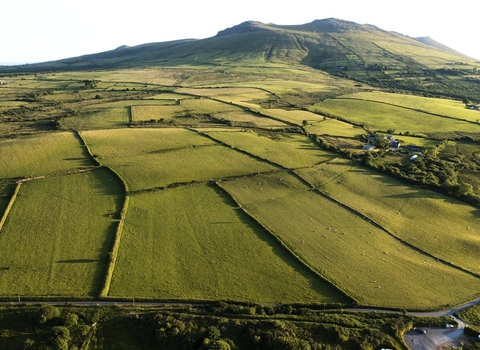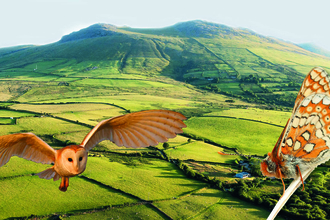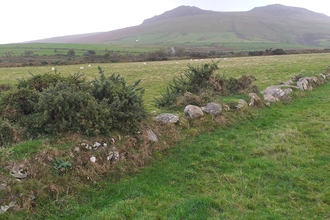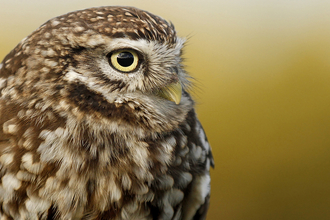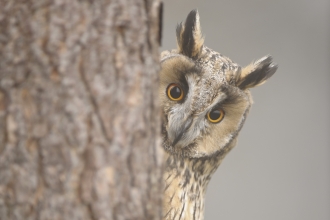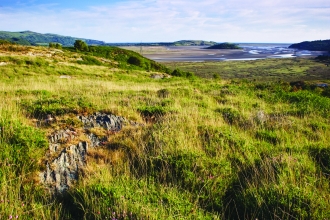Bryn Ifan is a rare opportunity to restore nature and provide wider benefits for the local economy and communities.
A vision for the future
Working in partnership with local farmers and communities, North Wales Wildlife Trust intends to restore nature at Bryn Ifan – 450 acres near Clynnog Fawr – for the benefit of people and wildlife.
The acquisition and ongoing management of Bryn Ifan has been and will be funded through a wide range of sources, including a generous donation from Aviva which will enable us to restore Celtic rainforest to the slopes of Bwlch Mawr. Our successful appeal has raised over £75,000 but we will need your continued support to raise funds to help nature recover at this special place.
In Wales, wildlife has been declining and now 17% of species are at risk of extinction. Together, we can restore habitats for rare butterflies, birds, ferns and flowers whilst supporting sustainable and regenerative farming.
News and updates
Bryn Ifan today ...
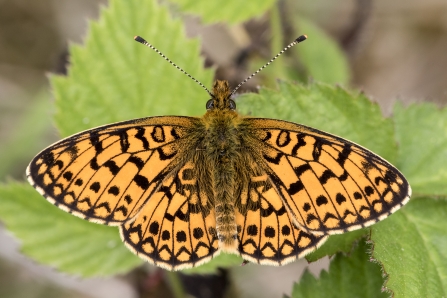
Small Pearl bordered Fritillary © Chris Lawrence
Thanks to the sympathetic care of the previous owners, Bryn Ifan is in good shape and some rare species can already be found here. However, the hillside of Bwlch Mawr needs restoring to woodland, and the lower fields have great potential to attract a wider variety of wildlife.
... and tomorrow
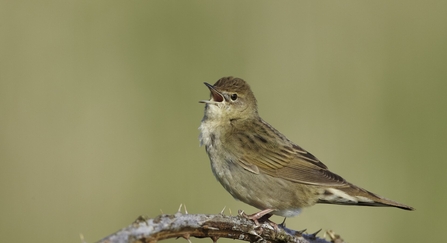
© Richard Steel/2020VISION
Under our care, the future for Bryn Ifan is bright. We’ll support regenerative farming that will help nature; enhance internationally important wetland and plant native woodland on the upland ffridd where it would have grown naturally years ago.
We’ll also share the benefits amongst the wider community by working closely with local landowners, graziers and contractors – including a mutually beneficial partnership with neighbouring Henbant Permaculture farm.
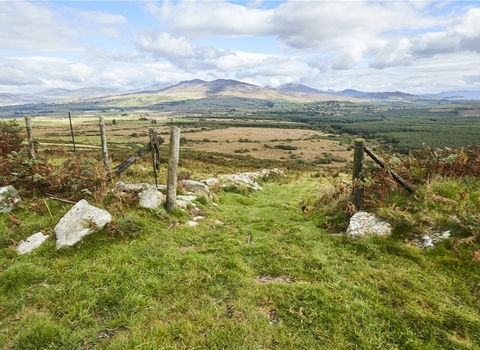
View from Bryn Ifan © Gwynn Jones
Please support our Bryn Ifan Appeal
Our initial appeal has raised an amazing £80,823. Thank you to everyone who has so generously donated.
But we will need your continued support to raise funds to help nature recover at this special place.
Bryn Ifan_video (https://youtu.be/B-ollB_Auo8)
© Gwynn Jones
Want to know more?
Where is Bryn Ifan?
Bryn Ifan is south of Caernarfon, where the Llyn Pensinsula starts to take shape. It lies on the north-eastern flanks of the mountains which include Yr Eifl, running down to the lowlands which head south to Porthmadog. Being close to the coast, it is highly affected by rain-laden south-westerly winds.
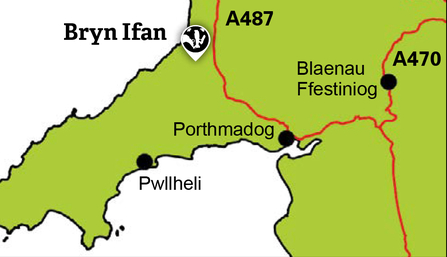
© NWWT
What is Bryn Ifan?
It is 450 acres of mixed land, comprised of lowland grassland and upland common (with Bryn Ifan holding sole common grazing rights). It includes a wetland, part of which is a Site of Special Scientific Interest (SSSI), and an upland block of rough ffridd, bracken and rocky outcrops.
Why has NWWT acquired it?
It helps achieve our priority of increasing land actively managed for nature’s recovery. Here, we will put wildlife centre-stage amidst a local network of wildlife-rich habitats. We will work with nearby farmers; hoping to demonstrate a future together for livestock farming, food production and wildlife. Bryn Ifan will also let us demonstrate how nature-based solutions in agriculture can support society by helping to counter climate change through, for instance, carbon sequestration.
What will we do with it?
- We will work with communities and local farmers through consultation and events to maximise wider cultural, economic and environmental benefits
- We will be transparent in everything we do and will actively encourage involvement of local people in the future plans for the farm
- We will take time to understand the land and its history.
- We will carry out surveys on the soil, vegetation, boundary, stock handling, mining, archaeology, access and wildlife to inform our plans.
- We will look at how the land has contributed to local agriculture, how it sits with neighbouring farming systems, and how it has changed over thousands of years.
- Where land is poor for both livestock and wildlife on the upland slopes we will carry out woodland restoration which in time may be lightly grazed as part of our conservation work.
- Where land is rich in wildlife we will ensure it thrives, and where land is good for agriculture, with local farmers, we will research and plan how food production and wildlife can succeed together to help inform a future for Welsh farming.
- We will continue current public access arrangements and see how further access can be managed without compromising the needs of wildlife and livestock. We will run bilingual events and activities engaging local people and schoolchildren in the future of Bryn Ifan.
What wildlife might I see there?
At the moment, we have little information about the wildlife using the land, and a priority is for us to find out more. We know that on the upland area, skylark and meadow pipit are breeding. The best-known area, is the wetland Site of Special Scientific Interest Cors y Wlad, which supports butterflies including rare marsh fritillary, narrow-bordered bee hawk moth, grasshopper warbler, and a wide range of wetland plants. The lowland area is the least understood by us, but we know hare, otter and barn owl may be found.
Can I visit?
Our walk detailed in Wildlife Walks: Nature Reserves and Beyond! takes in our Caeau Tan y Bwlch Nature Reserve and follows the public footpath on the upland part of Bryn Ifan.
Are you going to “rewild” the land?
We are going to give nature the best chance of recovery here, but we are not going to leave Bryn Ifan unmanaged to “re-wild”. For thousands of years, people have influenced how Bryn Ifan looks today; through mining, farming and encouraging wildlife. The natural environment; the weather, geology, water, air quality and soil have also created the patchwork of habitats we see. For nature to thrive, people will be an important part of Bryn Ifan’s future; it will continue to be part of the local economy, it will offer a nature-based solution to climate change, and with Caeau Tan y Bwlch Nature, it will be both a community resource, and a destination for wildlife-lovers. Working with natural processes, through a balance of agricultural management, and the enhancement and conservation of wildlife we will create a thriving place for people and nature.
Who can I contact if I have any further questions?
Frances Cattanach, Chief Executive Officer, North Wales Wildlife Trust
Frances.Cattanach@northwaleswildlifetrust.org.uk
How are you able to carry out a project at this scale?
The acquisition and ongoing management of Bryn Ifan has been and will be funded through a wide range of sources, including:
- A generous donation from Aviva, as part of a major UK-wide project with The Wildlife Trusts to restore and expand British rainforests. Please see First locations for The Wildlife Trusts’ Atlantic rainforest recovery programme announced and New fund to help The Wildlife Trusts restore rainforests of Britain.
- Support from our thousands of individual members and donors, including those who gave to our public appeal in April 2023 – we couldn’t do it without you, and we’ll continue to need your help.
- Our own unrestricted financial reserves, including those supported by membership and gifts in Wills.
- A wide range of grants, including those from public sources and charitable trusts
It’s a complicated funding mix because our expansive plans for nature’s recovery at Bryn Ifan are themselves complicated – it’s such wonderful opportunity! Our vision includes woodland restoration, wetland management, regenerative agriculture, community engagement and more – and we’d love you to be part of it.

